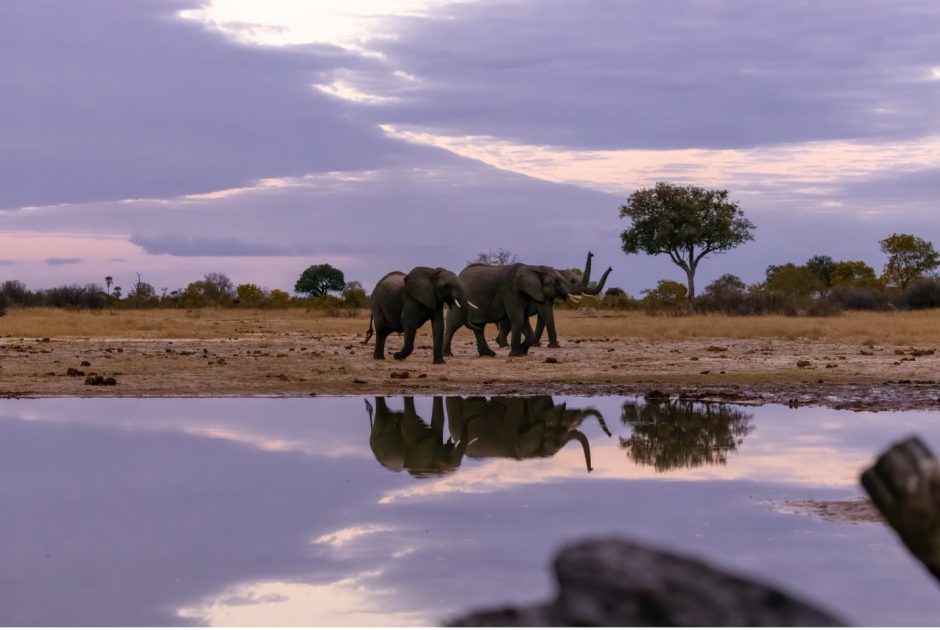
The Best Tips for Photographing Botswana’s Elephants
If an African safari is the peak of a nature photographer’s career, Botswana is the pinnacle. Between the extraordinary wildlife that appears in concentrations unlike anywhere else in Africa and the spectacular landscapes that act as superb complements to wildlife photos as well as prime stand-alone landscape photography scenes, the splendor of Botswana can’t be overstated.
There is perhaps no better way to symbolize the grandeur, beauty, and immensity of Botswana’s wilderness than an elephant. They’re wildly sentient, ubiquitous across the landscape, and provide endless photo opportunities. Let’s dive into various ways and techniques for capturing the awesomeness of Botswana’s elephants.
Capturing Scale of an Elephant
When dealing with an animal as enormous as an elephant, I typically like to head in one of two main directions with my photography. I either want to fill the frame with these impressive animals, such that I have edge-to-edge elephant(s), or I want to place them in the landscape to show not just multiple elephants in the herd but also the context of the elephants within the landscape.
As you can see below, when you’re in areas with close viewing of elephants (and armed with a trusty telephoto, like a 100-400mm lens), you can fill the frame as much as you’d like to get this edge-to-edge composition.
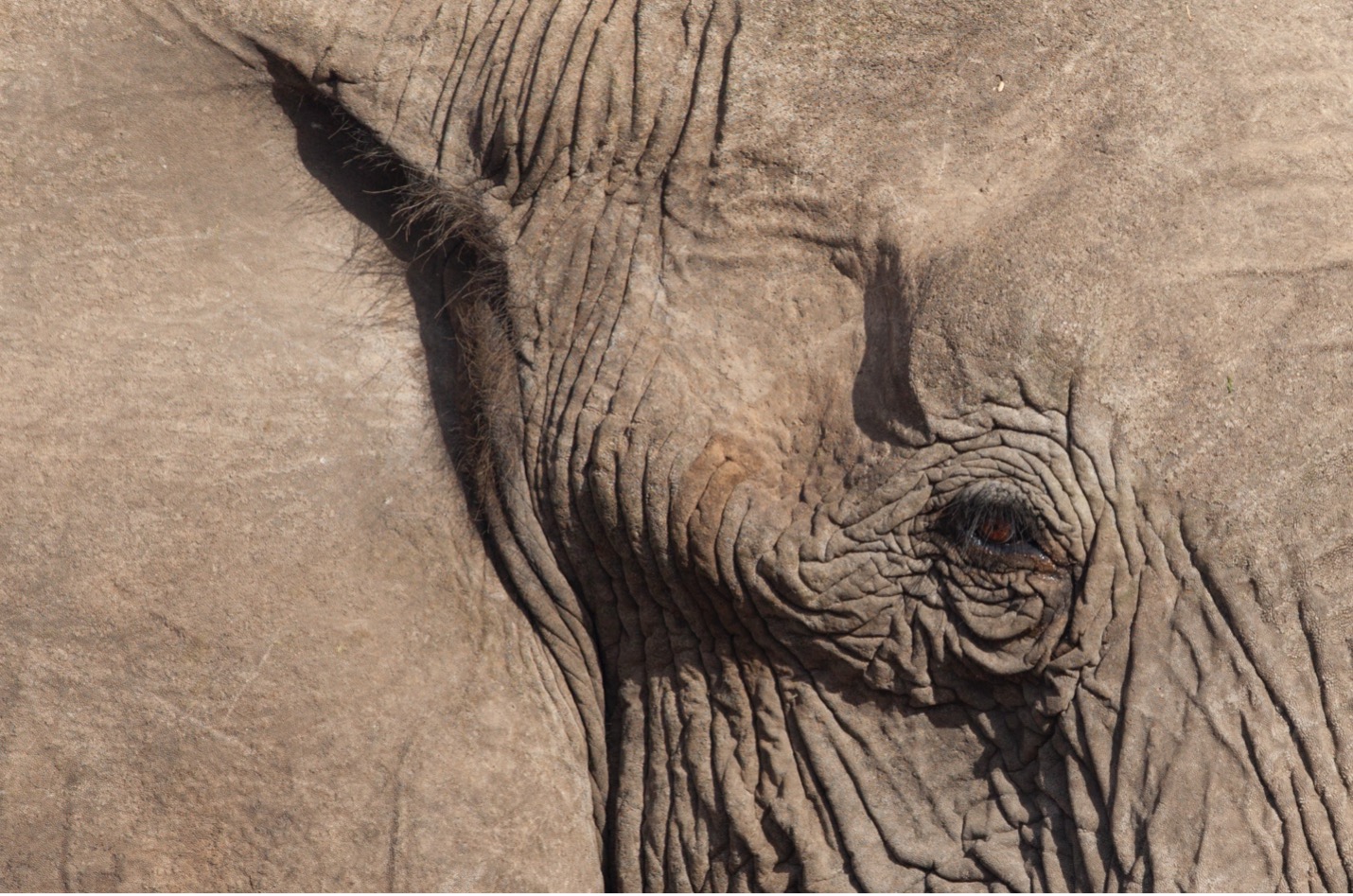
When lining up my photo for these “big” photos of elephants, I prefer those that feature just part of the elephant, such as the eye, face, etc. As you can see from the next photo, a photo of the entire head and part of the body of the elephant itself is nice, but it’s not quite as intriguing or compelling as one that features the elephant in literally every pixel of the photo as above.
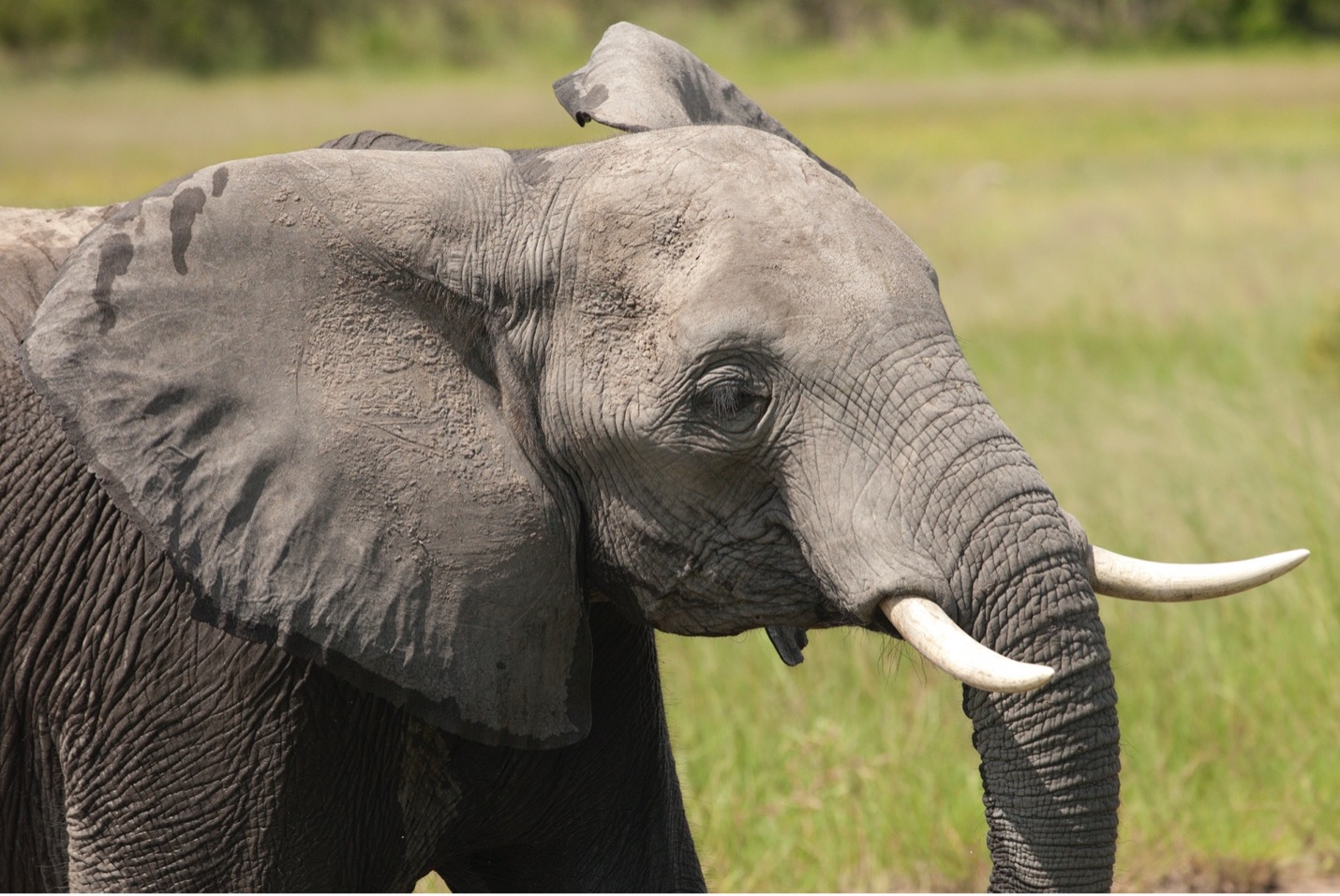
One way around the plainness of the above photo is to showcase one single elephant within a herd of elephants. This way, you can capture the entire face of a single elephant, which helps tell the story and connect the viewer with a single creature, while also benefitting by having elephant textures across the entire scene, like in the below. In the above photo, the green grass and distant background helps create a portrait effect, but it leaves the photo looking a little flat and uninteresting. The below photo is closer to where we want to be.
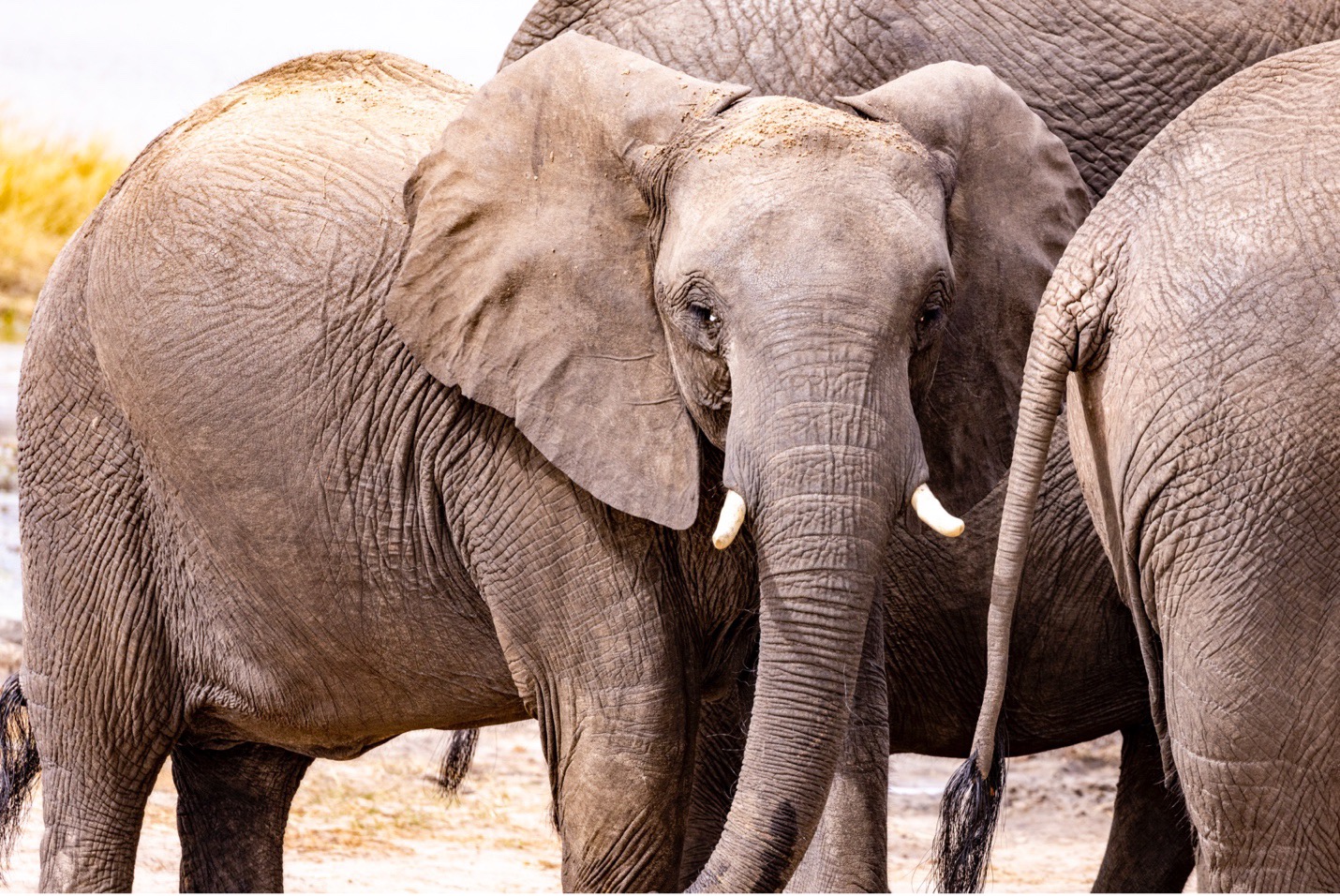
With the above photo, you capture that single animal, but instead of having the remaining textures somewhat unrelated, you fill the frame with elephants, maximizing the texture and context of the scene.
Conversely, my other main strategy for composing photos is to deliberately isolate and minimize the elephant from its surroundings. That is, I intentionally avoid showcasing the individual and instead showcase the environment of the elephant. This serves to provide a bit of relativity and allows the viewer to compare the size of the elephant to the size of the immense environment.

Above, I’ve chosen to deliberately zoom out and photograph this small herd in relation to the landscape. Although I could have zoomed in and filled the frame with these elephants, I am very conscientious about taking moments during these special sightings to capture the whole scene as my eyes see it. While this may not look overly impressive in the back of your camera, everything comes together once enlarged onto a computer screen or print piece.
In cases when I see elephants at some distance, instead of trying to eke out every bit of telephoto power I have, I opt for a very exaggerated photo of exactly how small even these giant creatures can appear in their surroundings.
This can be done at varying levels of exaggerated composition. The first one below is a more traditional composition, adhering to the rule of thirds. In contrast, the second photo is exaggerated to showcase the elephants as a small sliver of the scene. Neither one is “right,” but both are unique and captivating in their own ways.
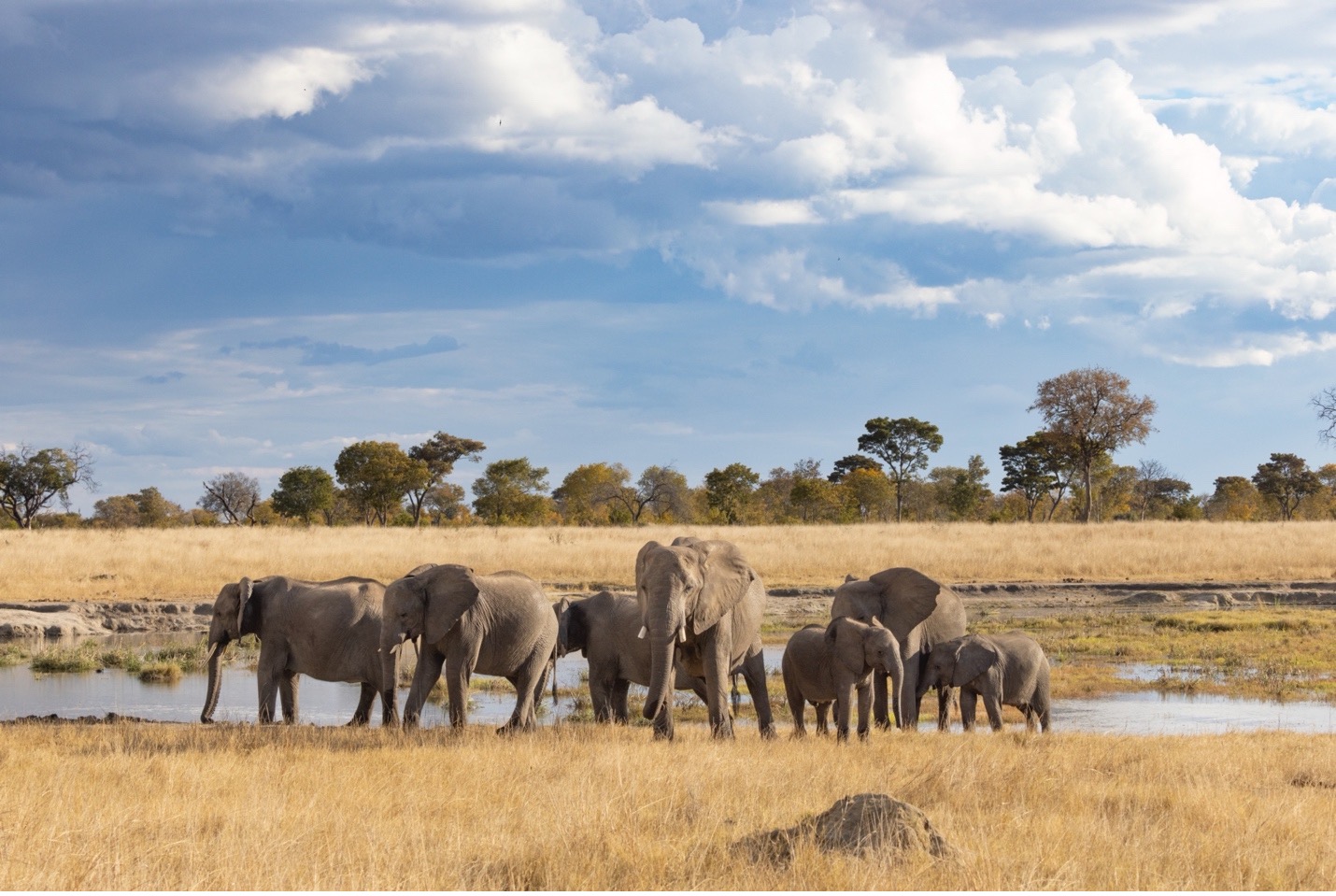
Framing
When exploring and photographing the watery labyrinth of Botswana’s Okavango Delta or the enigmatic Linyanti woodlands, the number of framing foreground elements can be immense.
What I mean by framing here is when you are able to incorporate a feature in the environment to create a metaphorical picture frame around your subject. This doesn’t need to be a certain shape or even a full box “frame.” The key point is that the frame you use helps direct the viewer’s eyes to the subject—in this case, the elephant. In addition, this technique provides a unique element to the photo and creates a bit more contrast, texture and intrigue.
In the below photo, notice how the elephant is filling the space quite perfectly, framed by the greenery on the sides and the tree limb at the bottom. The more exact you can be with framing, the better.
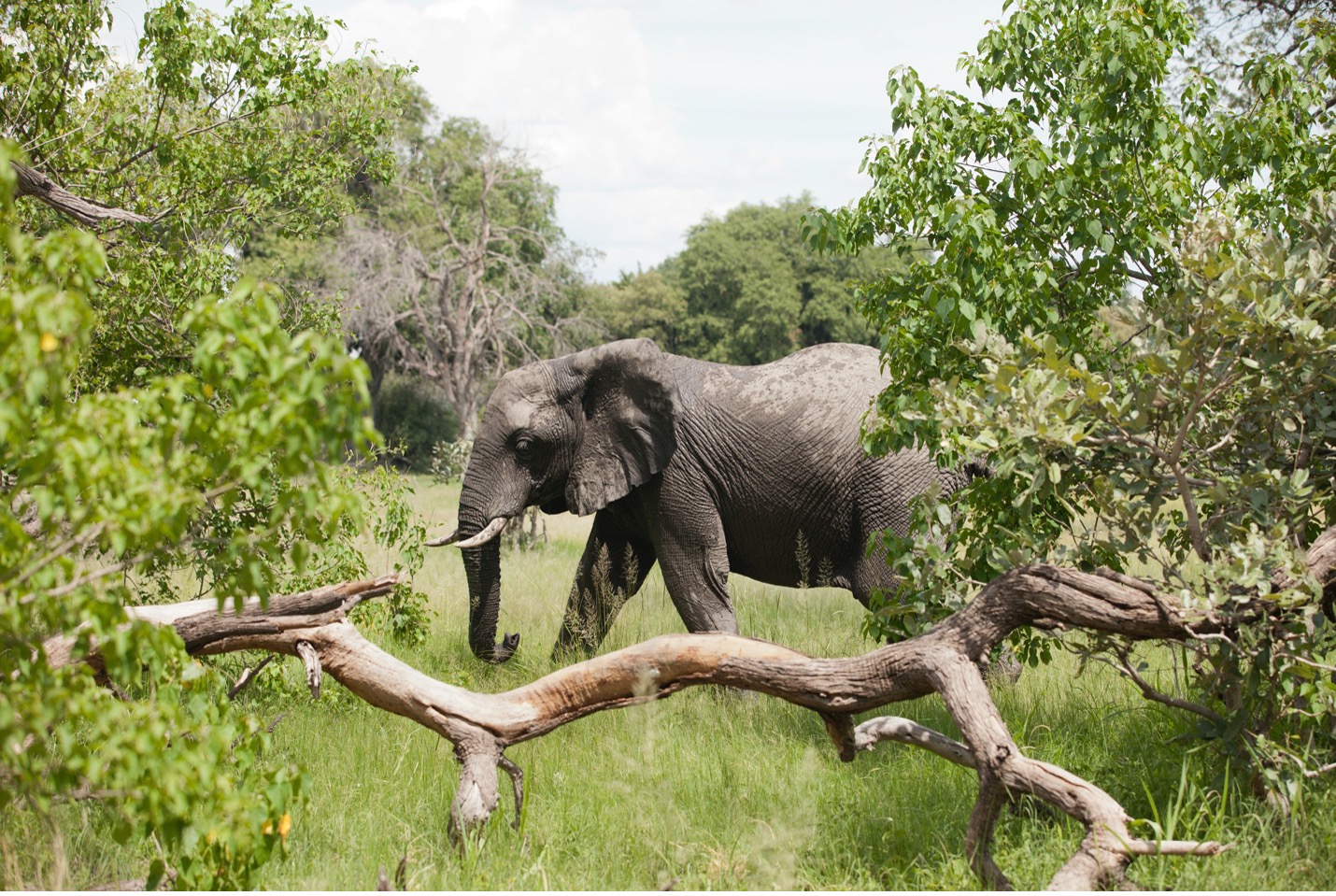
The above example is a bit of an “extreme” scenario where you can have framing on nearly all sides of the subject. You get a mixture of textures while slotting the subject perfectly within a tight frame. However, framing doesn’t always need to be this perfect. The photo below is another example of framing, this one is a bit more typical.
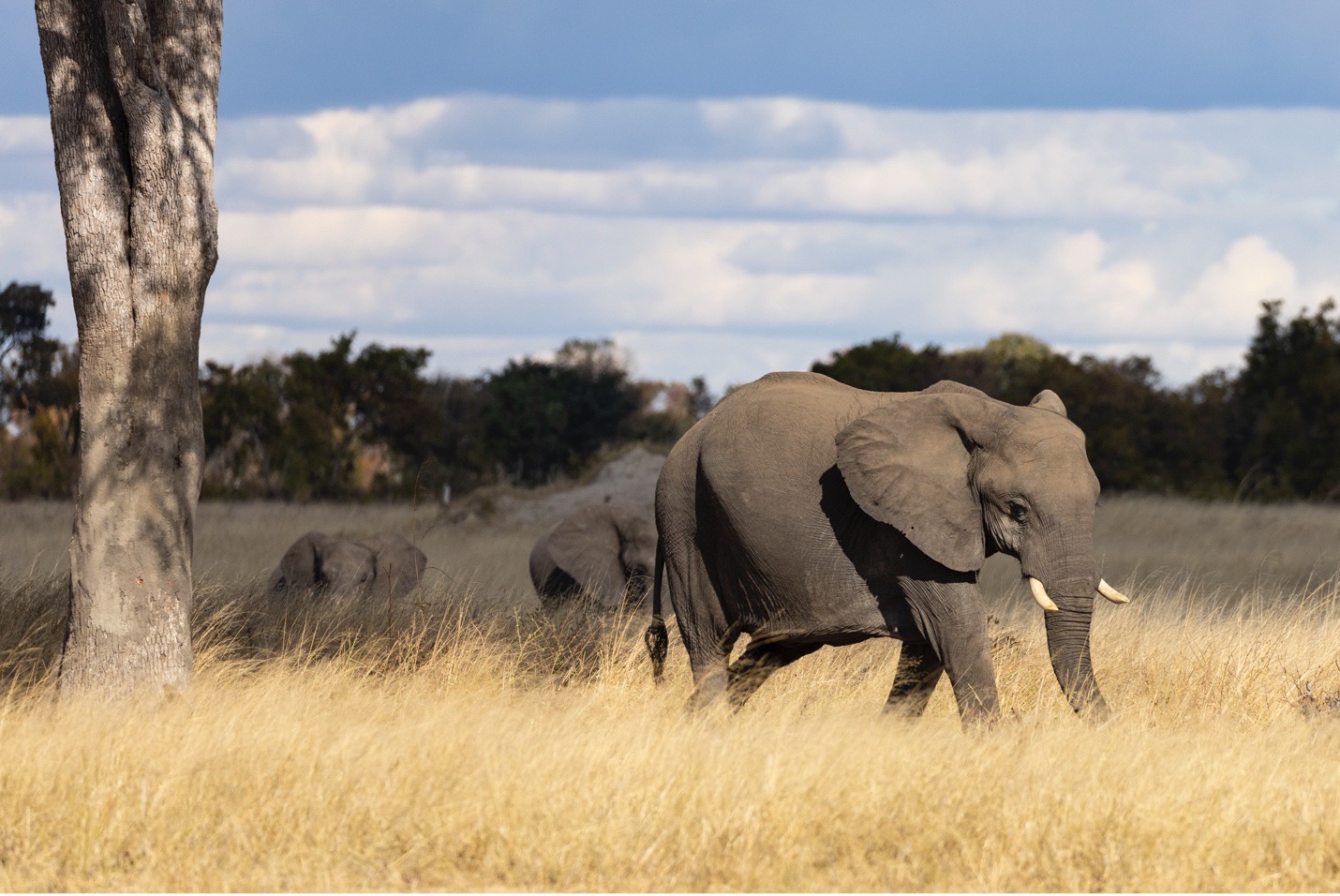
Above, you’ll notice one greater element of framing and one lesser element of framing. The tree on the left is the more dominant fixture, effectively framing off the left side of the photo and forcing your eyes to the right—where my subject is.
The lesser framing element is the whispy grass beneath the elephants. While this is a rather subtle framing feature, the uniform texture and color push the viewer’s eyes up. From the bottom of the photo, the viewer will follow the grasses toward the middle of the frame and lock onto the intended subject. As you can see, framing is a method for controlling where your viewer’s eyes go.
You can see that nearly anything can act as a frame, and with a bit of creativity, you can justify such framing in a very artistic way. However, that’s exactly the point. When you are deliberate in your composition and can justify what you’ve done to place elements, you become an artist.
Botswana, and safaris in general, lend themselves quite well to framing wildlife because there are so many environments and textures you can use to create these natural lines in your wildlife photo compositions.
Angle and Perspective
At some point during your safari, you’ll want to shift focus away from the “traditional” photos and begin thinking about how you can capture elephant photos at unique angles.
What you’ll notice is that most of your photos are taken from safari vehicles or viewing platforms at your safari camp, which gives you two specific perspectives or angles of view. Trust me, this is ordinarily plenty! However, when in Botswana, you’ll likely also have the thrilling opportunity to photograph elephants from small boats by way of delta skiffs. Although you may see elephants exhibiting similar behavior in similar environments as your other photos, you will likely have a much lower angle by boat, resulting in a totally different type of photo.
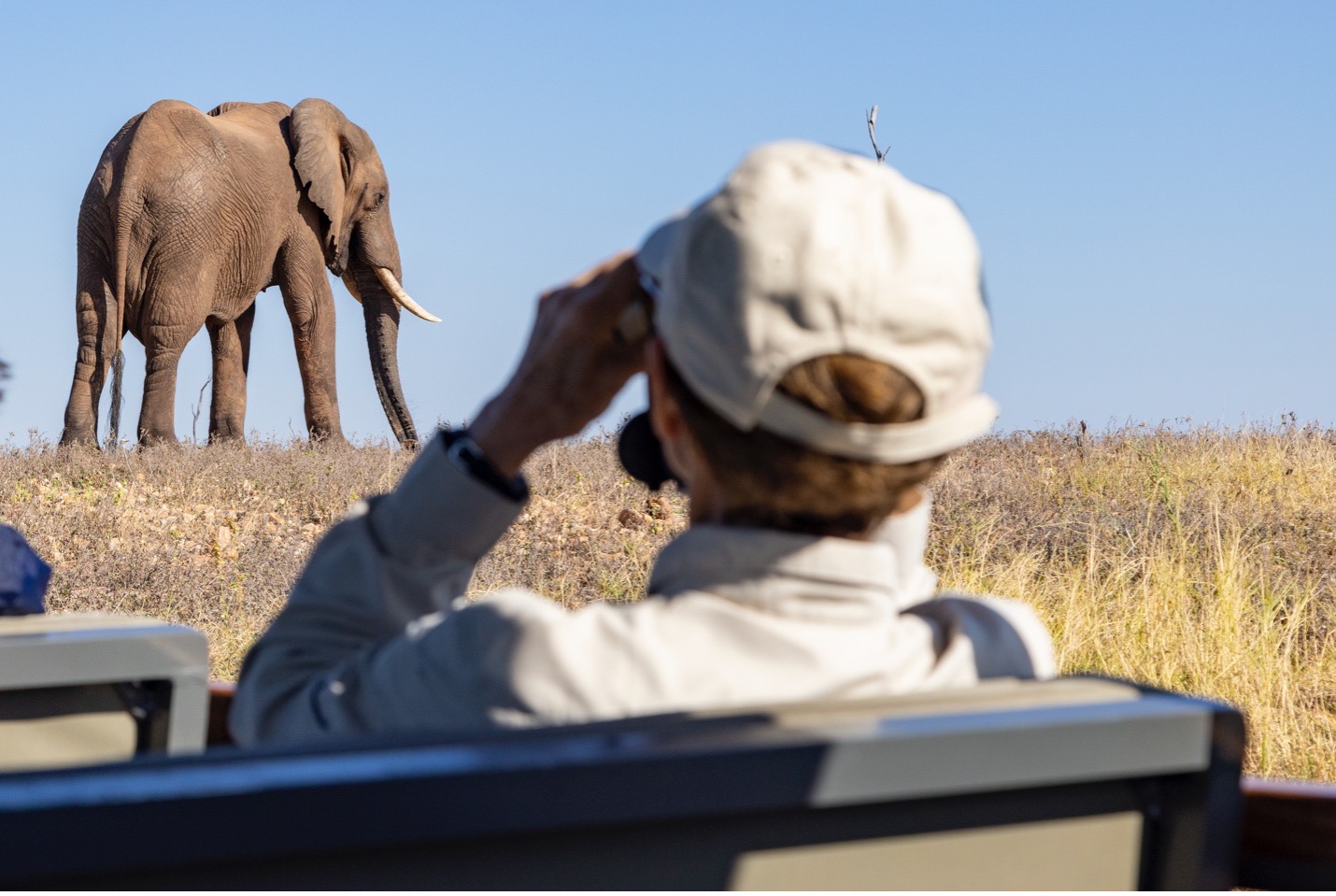
The result is that you are sometimes looking up at an elephant, or at the very least at eye level. This provides another style of elephant photography that complements your trip portfolio nicely.

This unique perspective often means that you will be shooting against a uniform background, like a blue sky. Thus, it’s always best to incorporate multiple styles here. For instance, you can photograph at a low angle, with a unique perspective, while also filling the frame with the elephant to create a “big” photo, as I talked about in the first section.
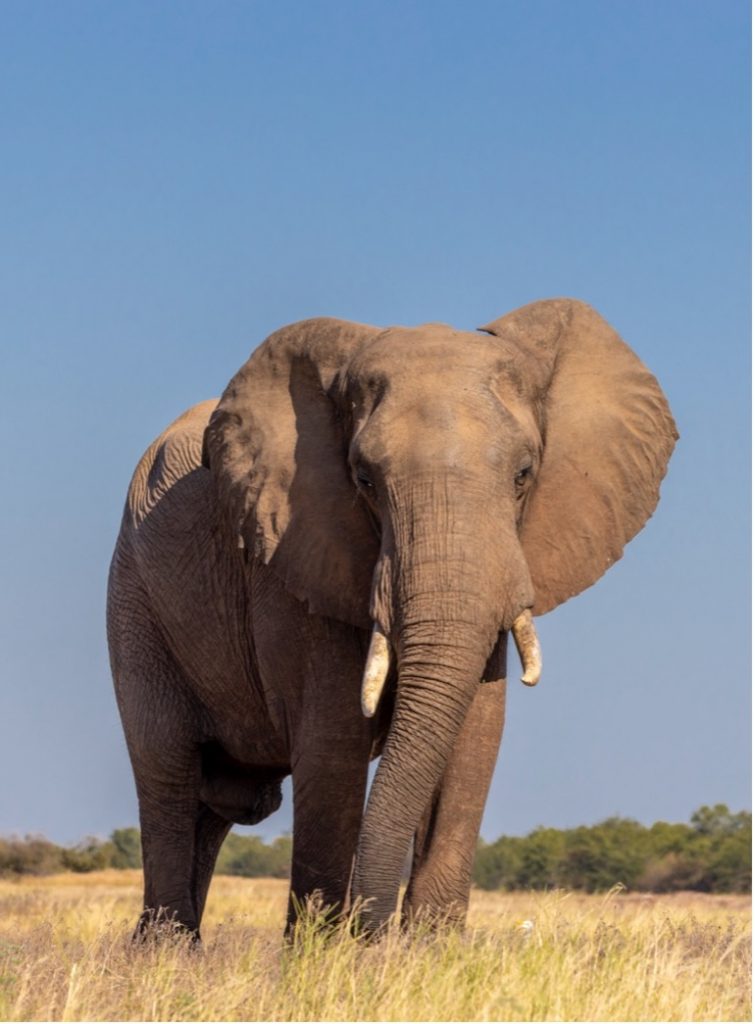
Notice how the photo of the woman viewing the elephant is particularly intriguing? With these angles, providing some additional context, like including part of the boat or a fellow traveler, can work wonders.
The simplicity of the above composition, made possible by that low angle, lends itself well to featuring the elephant and little else in the scene.
Another chance at a unique angle is one of the fantastic “hides” that many camps in Botswana have. These simple structures are usually built from natural materials and perhaps even into the ground to minimize the effect and impact on wildlife behaviors. The idea is to be completely neutral in the environment and have the ability to take wildly unique photos at that low angle. These are usually positioned near watering holes for maximum wildlife traffic.
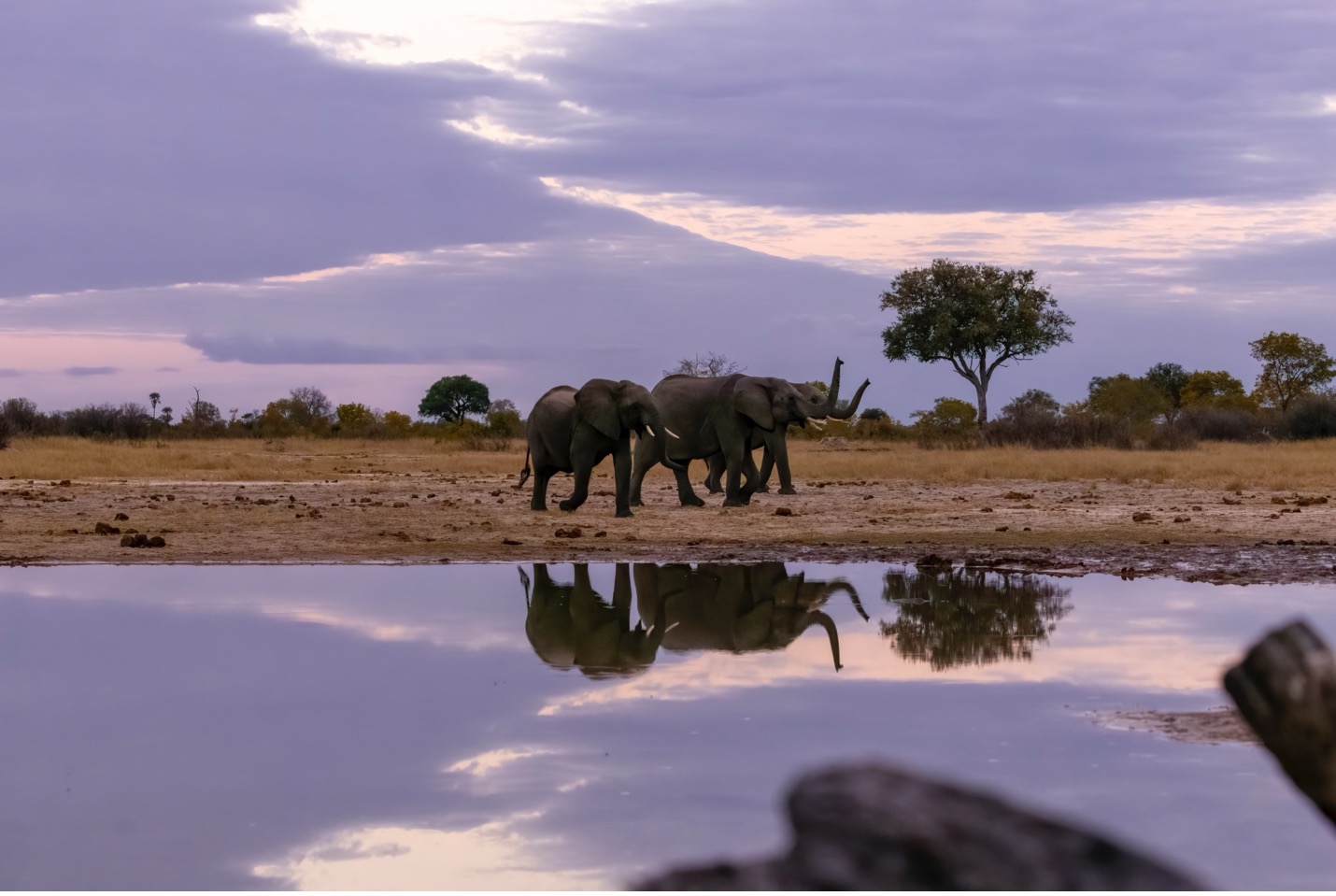
Because these hides are structures, you have the added challenge here of not being able to shift your position much. Thus, you are at the mercy of wildlife behaviors and movements. However, this is absolutely part of the fun. As you can see from the photo above, being positioned near a waterhole means not only do you often get great elephant activity, but you have the chance for sunrise and sunset colors in your water reflections.
Behavior
Finally, no elephant photography tutorial would be complete without talking about how to capture their antics!
Elephants are revered as some of the most charismatic wildlife in all of Africa for a reason. Whether they are communing with one another, defending their herd, or migrating from place to place, the variety of behaviors is extraordinary. Plus, they are incredibly intelligent, so it’s pretty common to be surprised by seeing a “new” behavior that stops you in your tracks and insists that you photograph it.
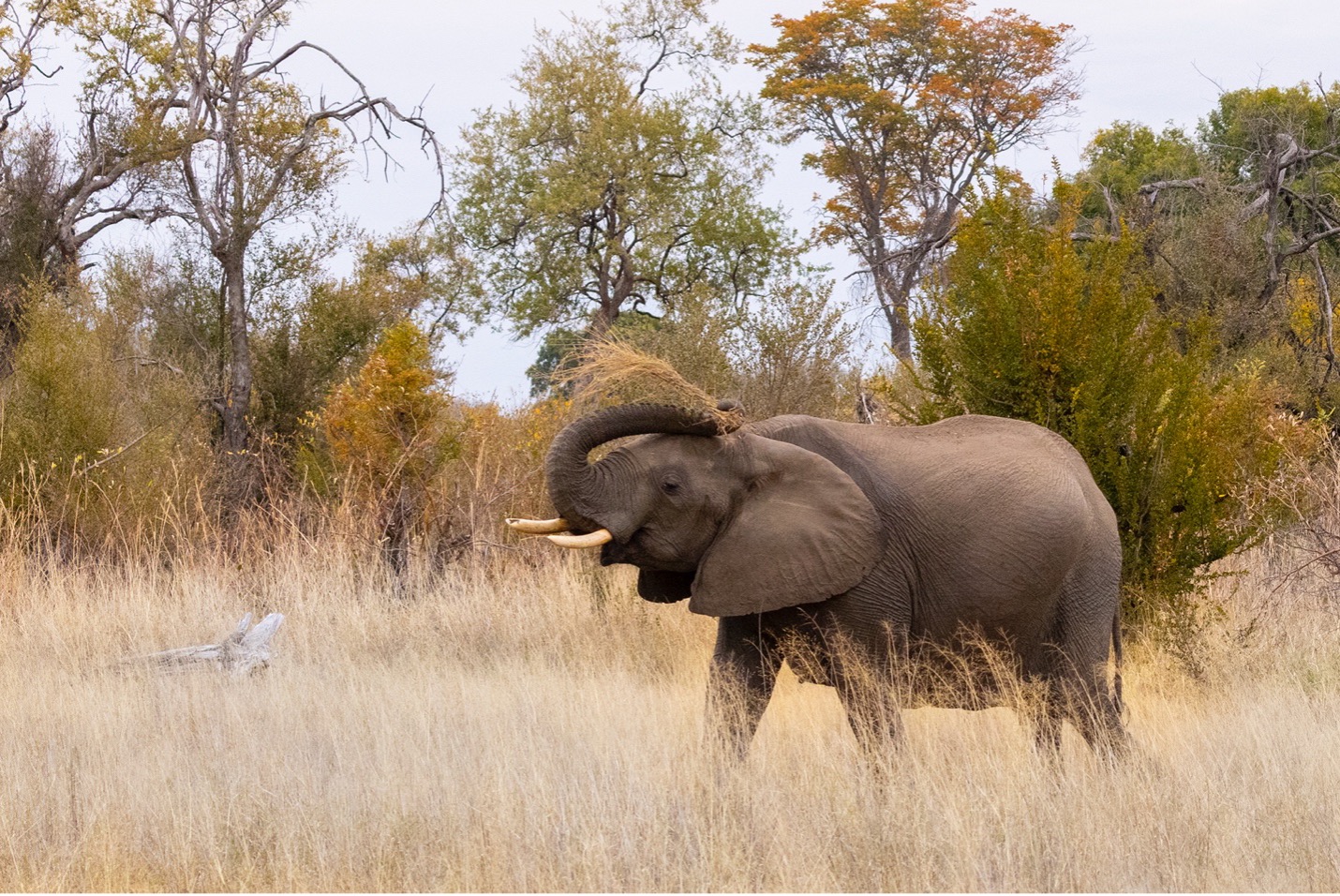
When striving to capture elephant behavior, you can essentially throw out all of the other strategies like composition, framing, etc. You can compose and crop your photo later, as capturing a special behavior is much more about the timing and precision of your photo.
In order to increase your chances of capturing this type of photo, you should be familiar with how to maximize your frame rate on your camera and be ready to photograph at a high shutter speed. Because your composition and framing may not be impeccable in the moment, I recommend photographing wider than you normally would in order to be able to crop, straighten and generally compose your photo in post-processing.
To maximize frame rate, you’ll want to find the “drive motor” menu of your camera and find the “high drive motor” option. This causes your camera to take as many photos (frames) per second as possible. For newer cameras, this might be in the high single digits or perhaps even up to 15 or 20 photos per second. The reason for this is that when elephant behaviors are happening, such as a young male chasing off a pack of painted dogs (below), every subtle nuance of the behavior changes in a split second.
Coupled with the high drive setting, you must be at a fast enough shutter speed to freeze motion. Because elephant behavior can be abrupt and dramatic, I recommend a shutter speed of at least 1/1000th of a second, perhaps even 1/1500th of a second, to capture the moment.
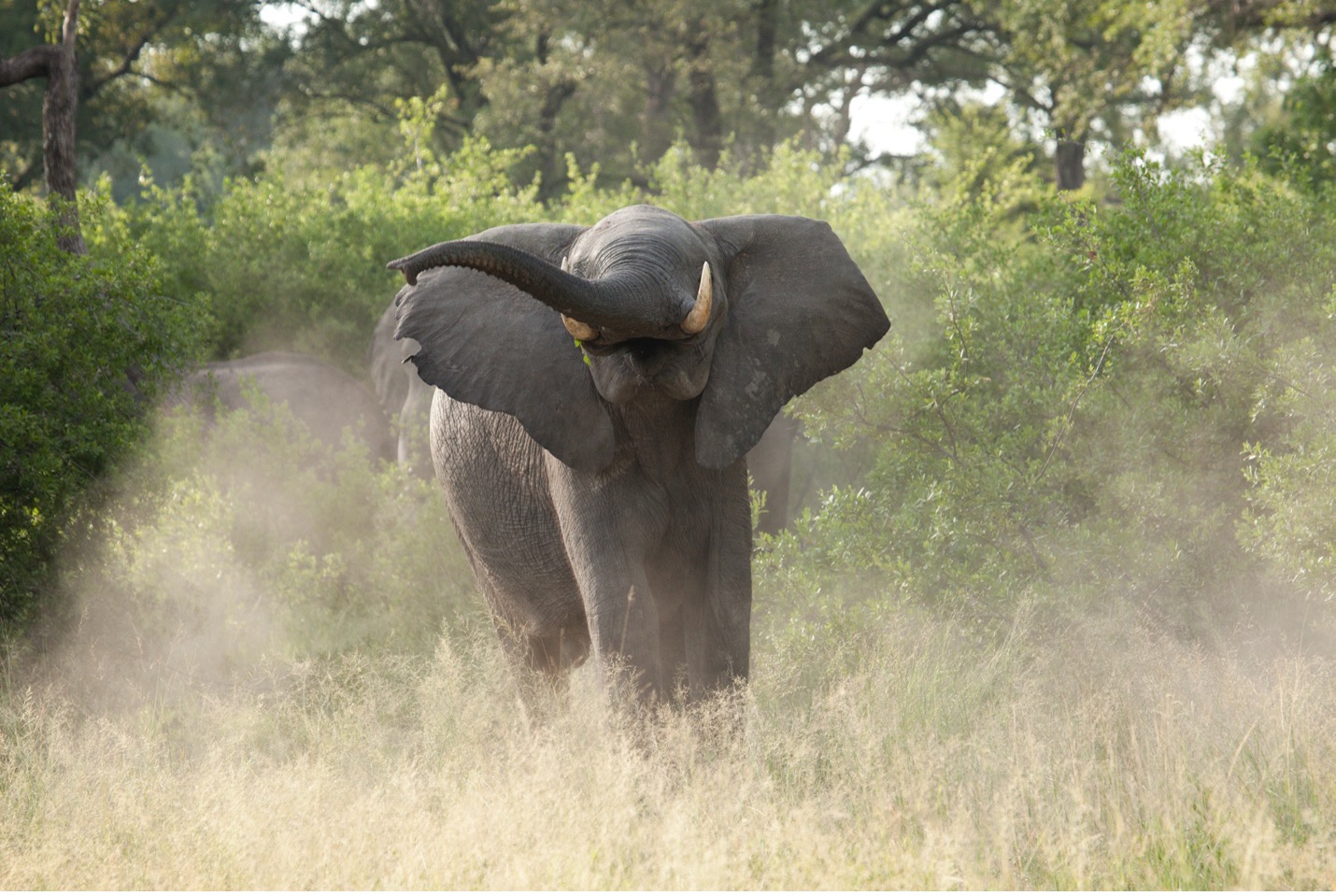 Thus, if you are fortunate and have a series of 30 or 40 photos from a particular moment, you can choose the one (or the ones) that showcase what you’re looking for in the best way possible.
Thus, if you are fortunate and have a series of 30 or 40 photos from a particular moment, you can choose the one (or the ones) that showcase what you’re looking for in the best way possible.
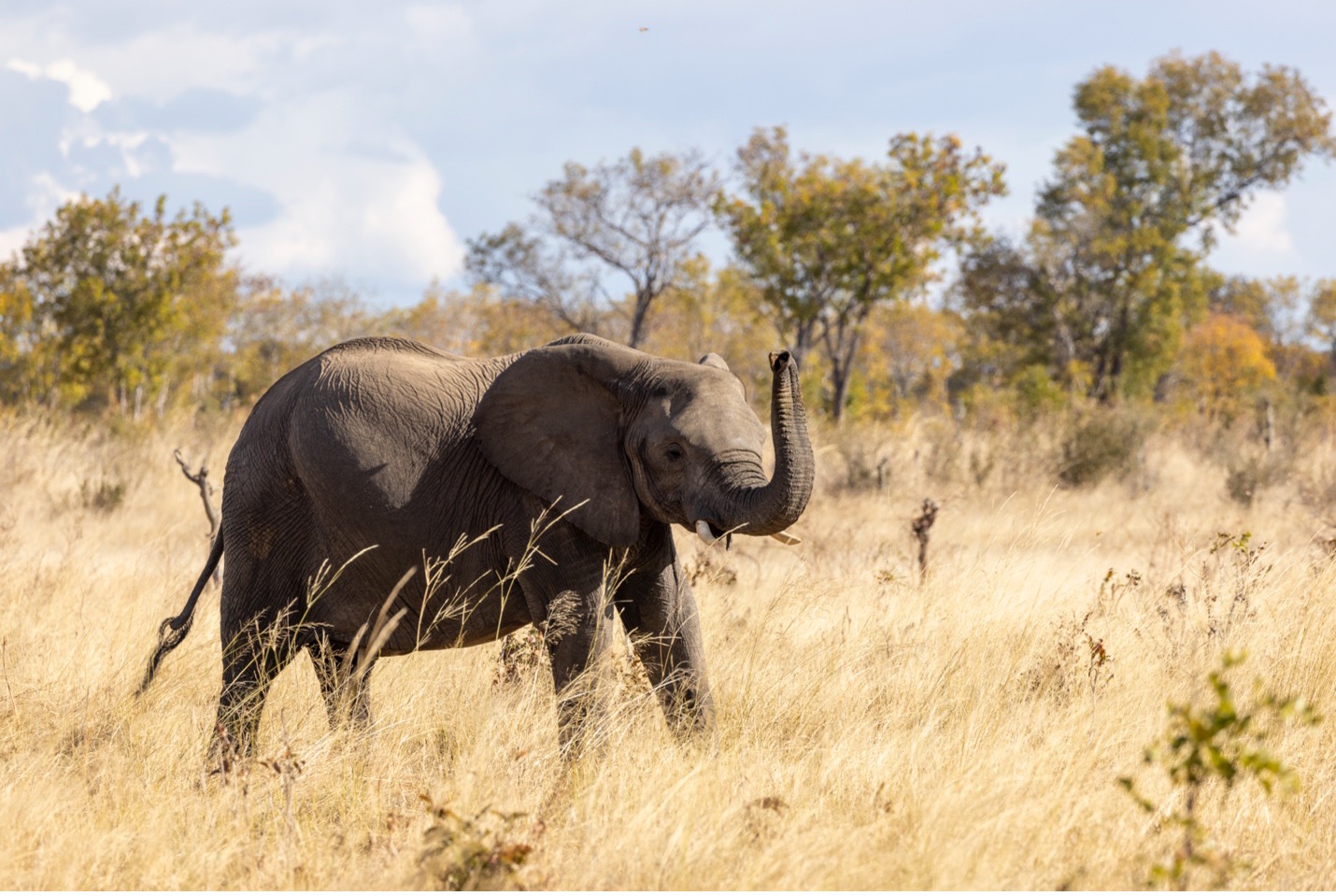
If you’re thinking about heading to or are in the midst of planning a photo safari to Botswana, I hope this provides some extra inspiration for your journey! It’s thrilling just to be in front of massive African elephants, let alone photographing one of the largest terrestrial animals on Earth. And when you get to do so in the incredible backdrop that is Botswana, you’re going to have the absolute time of your life.
Enjoy!
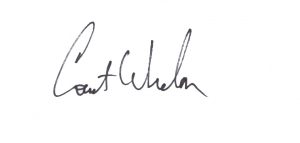
Court
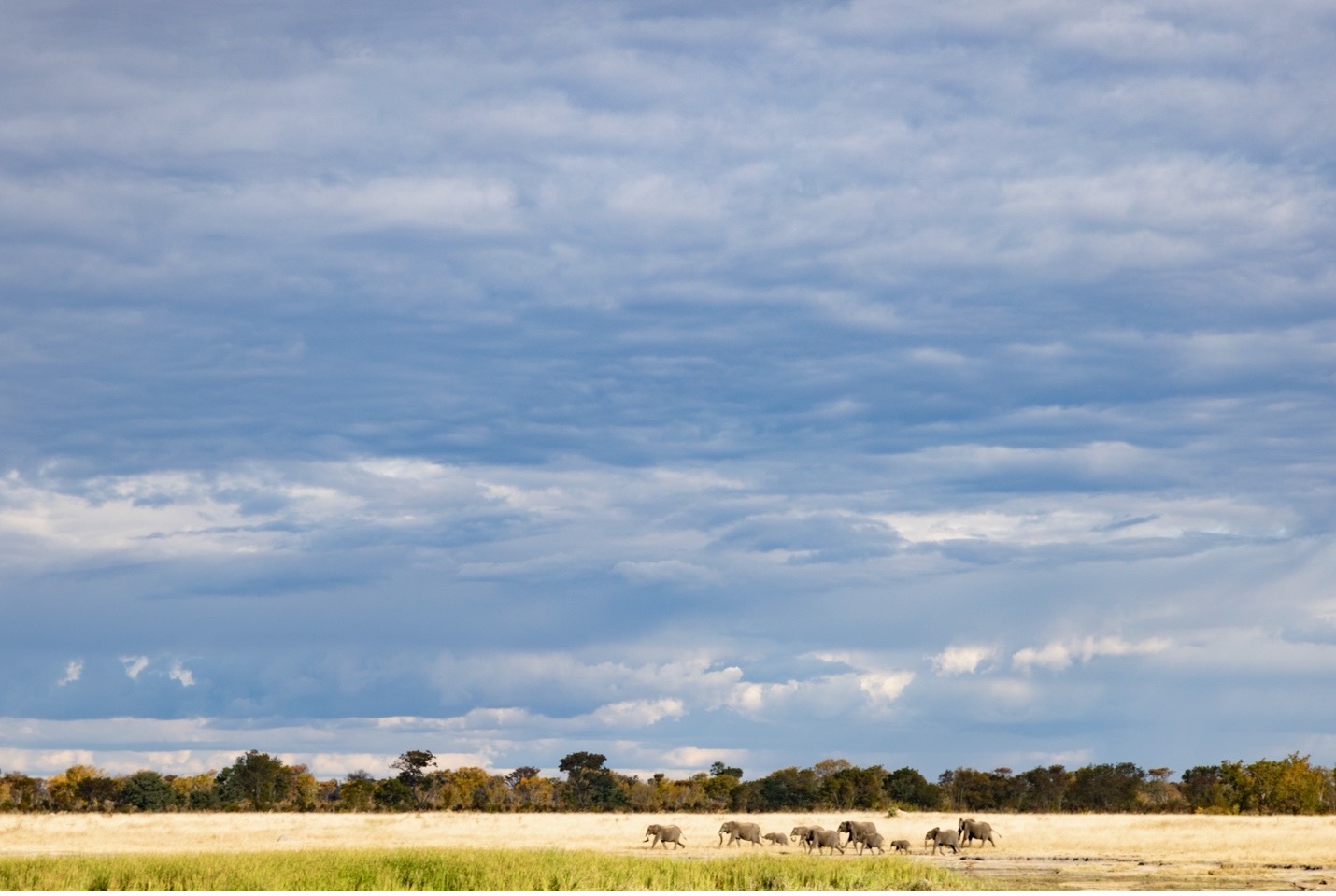
5 Comments

Sarah
March 20, 2023 at 2:21 am

Mike
March 24, 2023 at 2:28 am
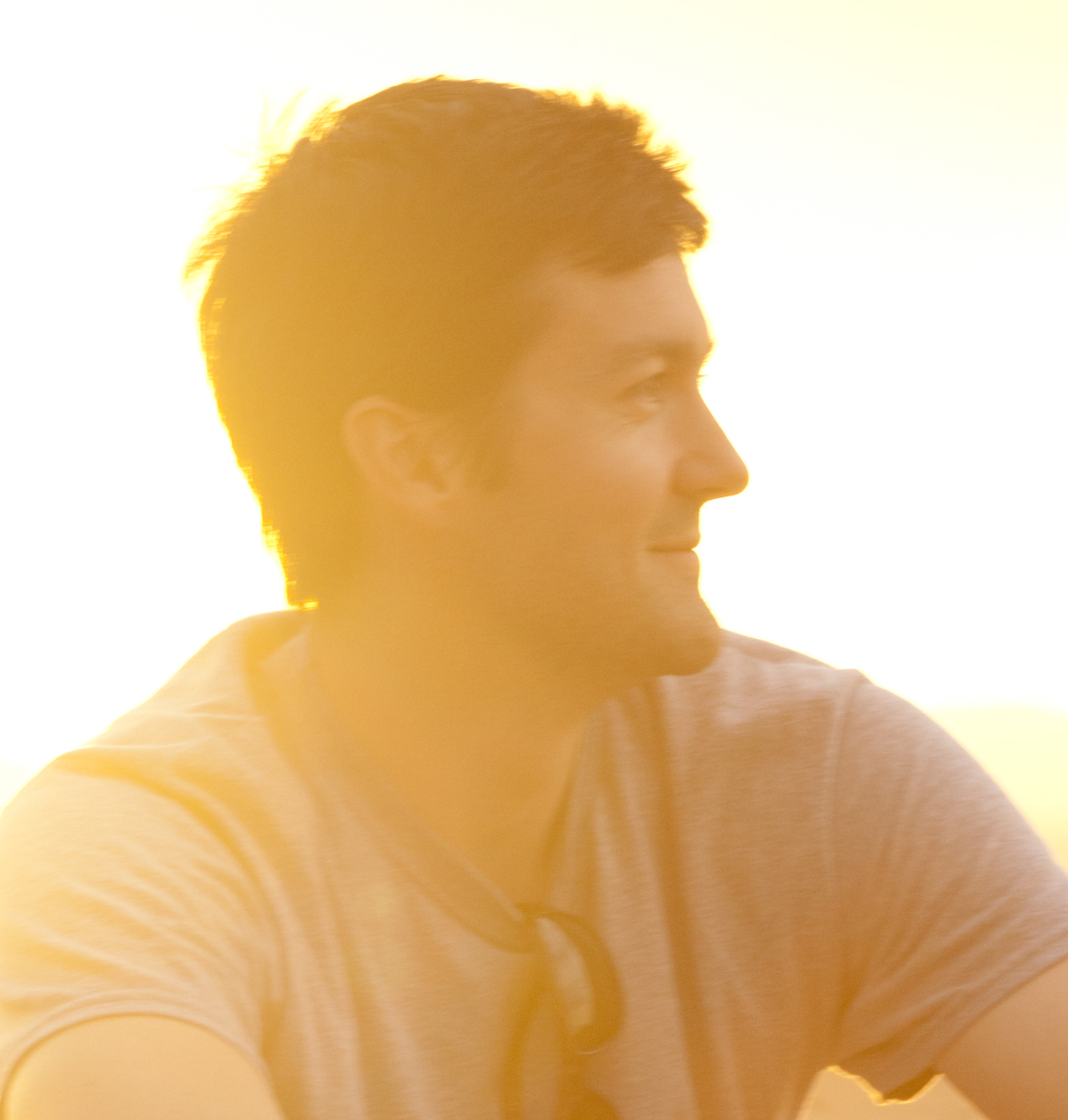
Court Whelan, Ph.D.
April 21, 2023 at 9:11 am

Barbara Coulter
May 3, 2024 at 4:52 pm

Court Whelan, Ph.D.
May 7, 2024 at 2:08 pm
Wow! S amazing photos. Thank you Court Whelan for sharing this with the world
I am going to Botswana in June and these tips have been so valuable. Thank you.
you’re so welcome, Mike! Enjoy the adventure!
Botswana trip includes Victoria Falls…..any advice for photographing the epic scene?
Hi Barbara! Yes indeed, I do have some advice! The obvious is to shoot the entire scene at first. But you’ll quickly realize that it’s almost too big to comprehend, or too big to capture in a jaw-dropping sort of way. So my advice is (after you shoot the classic wide, all encompassing shot) is to break the falls into their components…the rocks, zoomed into the intense water flow, the top of the falls, the bottom of the falls, and the mist…shoot these separately to create a bit of a photo story or a photo essay. It’s tempting to want to blur the water in a classic silky look, and for that you’d definitely need a neutral density filter to dim the light, but honestly there is just SO much water it isn’t as impactful as you might think. Again, think about breaking the scene into many, many components and shoot them individually. Be sure to have a good zoom range, like a 24-105 lens, and perhaps even a zoom telephoto like a 70-200 or 100-400!